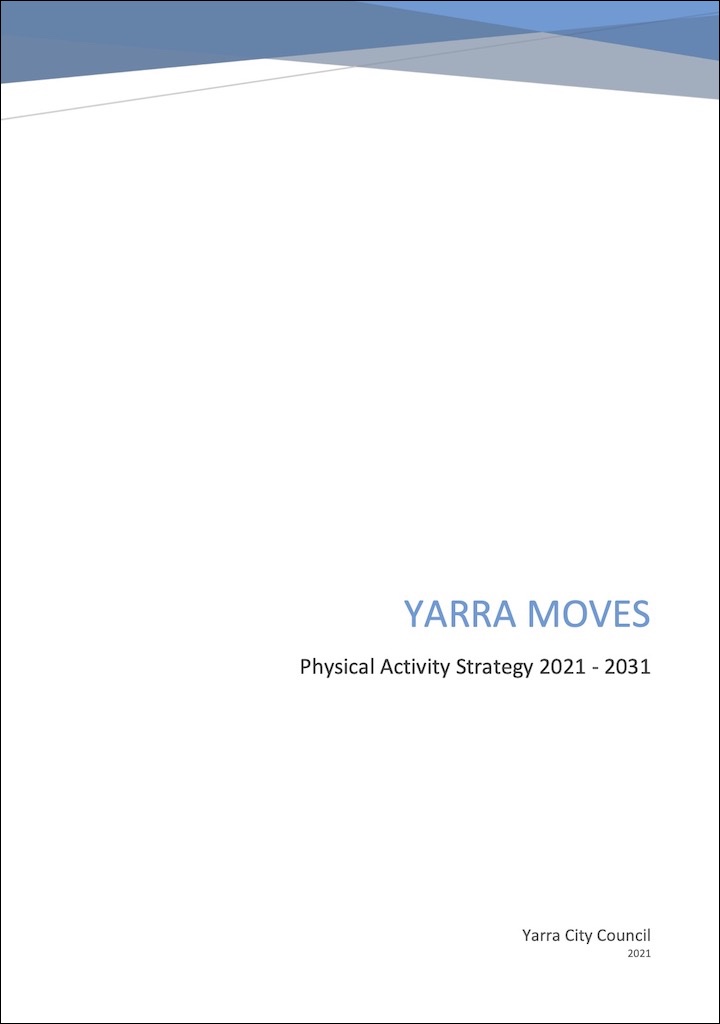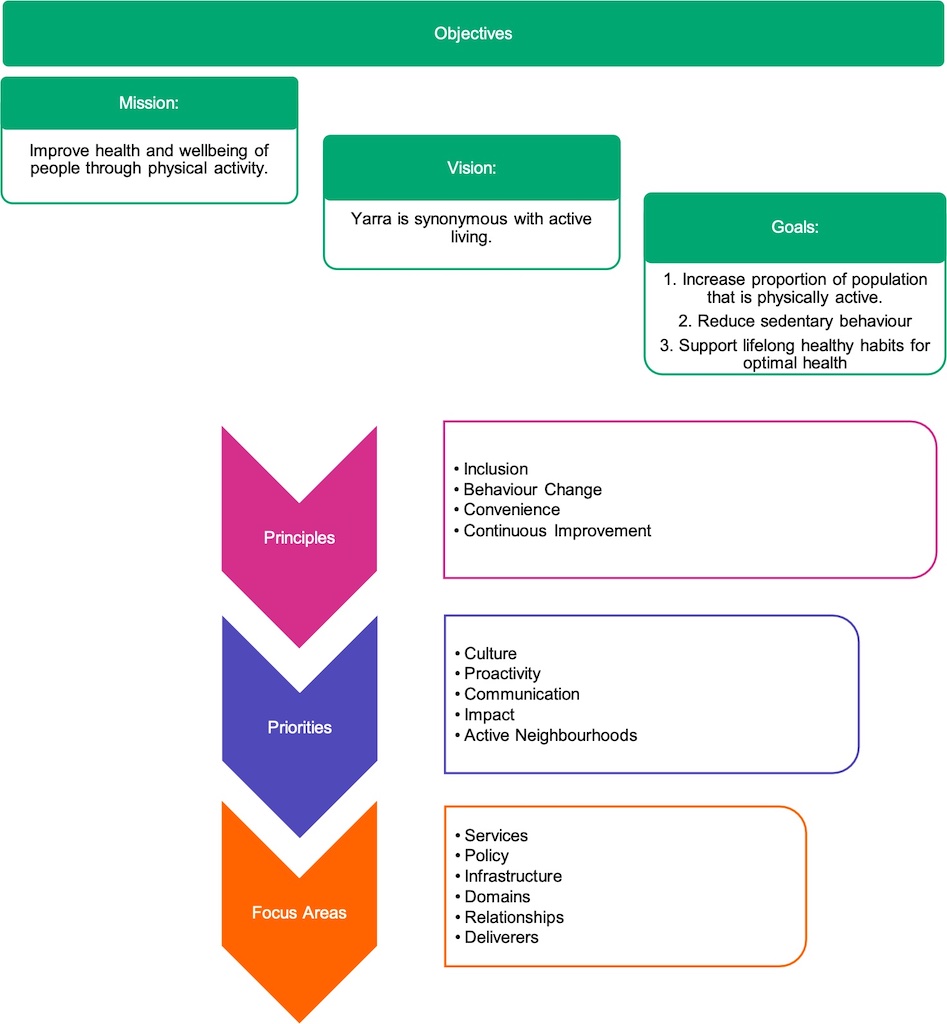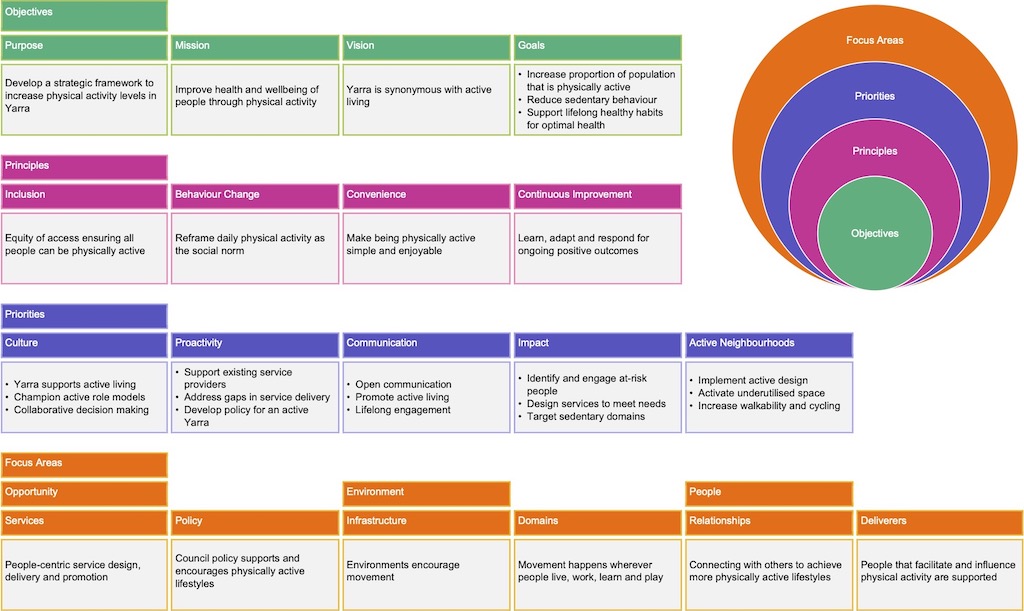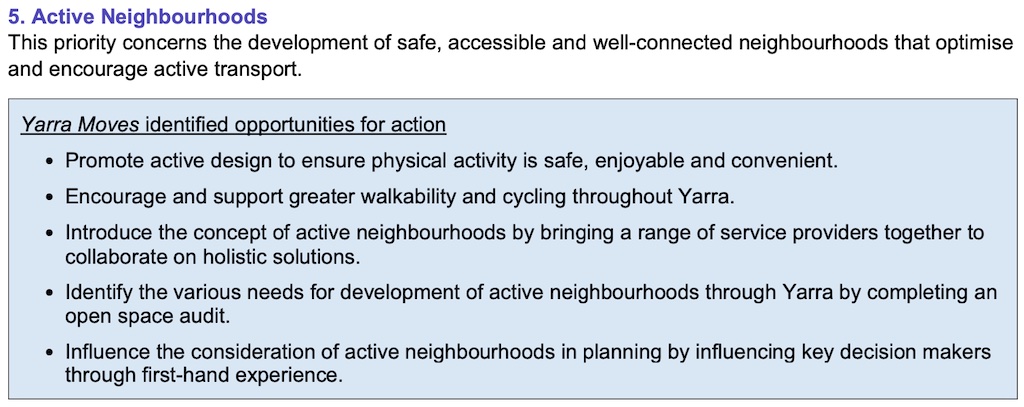Council officers have published a draft Physical Activity Strategy 2021-2031 and recommended that councillors adopt it at the council meeting on 7th September 2021. It effectively replaces the Sports Strategy 2008-2012, which is so old it no longer appears on the council website.

Methodology
The strategy includes a clear set of objectives, principles, priorities and focus areas:


Best practice
The strategy includes many best practice elements, including:
Principles >> Inclusion >> Equity of access ensuring all people can be physically active
Principles >> Behaviour Change >> Reframe daily physical activity as the social norm
Principles >> Convenience >> Make being physically active simple and enjoyable
Physical Activity Strategy 2021-2031
Priorities >> Active Neighbourhoods >> Increase walkability and cycling
Physical Activity Strategy 2021-2031
Focus Areas >> Infrastructure >> Environments encourage movement
Physical Activity Strategy 2021-2031
Many of the barriers identified (refer to Table 12: Barriers to engaging in physical activity in Attachment 1 – Yarra Moves Literature Review) can be overcome through ensuring physical activity is a convenient option at every stage of the day.
Physical Activity Strategy 2021-2031

…Yarra’s infrastructure needs to cater for daily activity in an environment that faces competing demand for access. Yarra Moves supports the principles for 20- minute neighbourhoods (refer to Diagram 8: 20 minute Neighbourhood) enabling all people to meet most everyday needs within a 20-minute journey from home by active transport.
Physical Activity Strategy 2021-2031

Opportunities for improvement
Value
It would be better if the strategy introduced, and committed to, the principle of value. For example, council spends money on a range of infrastructure and services that supports physical activity, ranging from golf courses to tennis courts to footpaths. Each type of infrastructure costs a certain amount of money each year for operation and maintenance, including multi-decadal costs for significant renewals, such as relaying turf on a golf course, resurfacing a tennis court, or re-paving a footpath. Correspondingly, each type of infrastructure generates a certain number of person-hours of physical activity. Combining the data, council could assess and compare the expenditure on different types of infrastructure, based on the number of person-hours of activity that each dollar generated. This would help council and residents to prioritise and allocate expenditure.
If such an assessment was conducted, the number of people using footpaths and bike lanes to walk and cycle in Yarra should include visitors as well as residents. The strategy notes that 900,000 people visit Yarra each year.
If a more detailed analysis was desired, the person-hours of each type of activity could be scaled by the aerobic level of the activity.
Stronger language
It would be better stronger language was used for “Priority >> Active Neighbourhoods” and “Focus Area >> Infrastructure”, e.g. to use the words “build and maintain”, not just the words “promote” or “encourage”.

Presentation
It would be better if the Venn-style diagram was corrected to show the focus areas as a subset of the objectives, not other way around. The diagram on the left is from the strategy, the diagram on the right is the proposed correction.


Conclusion
The draft Physical Strategy 2021-2031 is good, and Streets Alive Yarra recommends that it be adopted, ideally with the updates and corrections suggested.
Published 2nd September 2021
